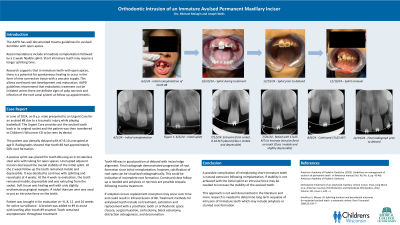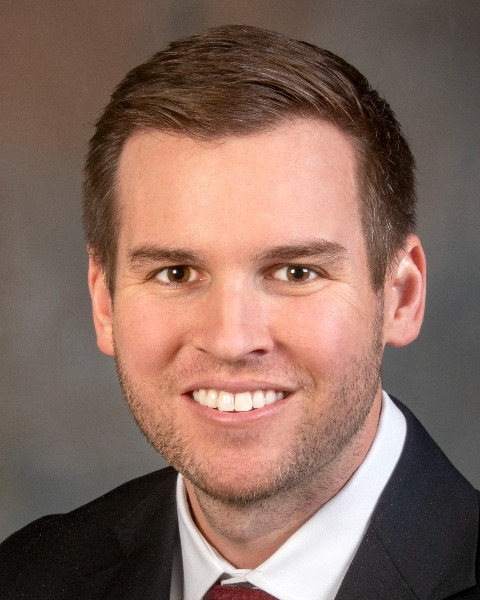Trauma
234 - Orthodontic Intrusion of an Avulsed Immature Tooth


Joseph Wells, DDS (he/him/his)
Resident
Children’s Hospital of Wisconsin, Milwaukee, WI
Children's Wisconsin
Wauwatosa, Wisconsin, United States- MM
Michael Melugin, DDS
Orthodontist and Oral Surgeon
Children’s Hospital of Wisconsin, Milwaukee, WI
Milwaukee, Wisconsin, United States - CD
Carli DiGioia, DMD
Program Director
Children’s Hospital of Wisconsin, Milwaukee, WI
Milwaukee, Wisconsin, United States
Presenting Author(s)
Research Mentor(s)
Program Director(s)
Introduction: Avulsion of permanent teeth is a serious dental injury most commonly affecting children aged 8-12 years. Reimplantation aims to preserve the tooth, but complications like ankylosis and root resorption can occur. Evaluation for removal of the splint at 2 weeks is recommended to allow for physiologic healing and periodontal ligament regeneration. However, stability of the tooth is needed before the splint can be removed. This case report presents the successful orthodontic intrusion of an immature maxillary central incisor following avulsion and reimplantation.
Case Report: A 7-year-old patient presented with an avulsed tooth #8 due to a traumatic injury while playing basketball. The tooth was reimplanted within one hour of the injury and splinted with a flexible splint. At 2 and 5 week follow-ups, the tooth remained mobile and depressible. At the 5-week follow-up, 2 to 3 mm of extrusive movement raised concerns for long-term stability. Orthodontic intrusion was initiated using light continuous forces to reposition the tooth and improve stability. At the 6-month follow-up, the tooth showed no signs of further root resorption or ankylosis and exhibited physiologic mobility. A periapical radiograph showed signs of calcification at the apex suggesting that incomplete root formation could result. Continuity of root formation was hard to discern at this time.
Conclusion: Orthodontic intrusion may be a viable treatment option for managing reimplanted teeth with immature root development if initial reimplantation fails to achieve stability. Long-term follow-up is essential to monitor for ankylosis, root formation or root resorption.
Identify Supporting Agency and Grant Number:

.jpg)